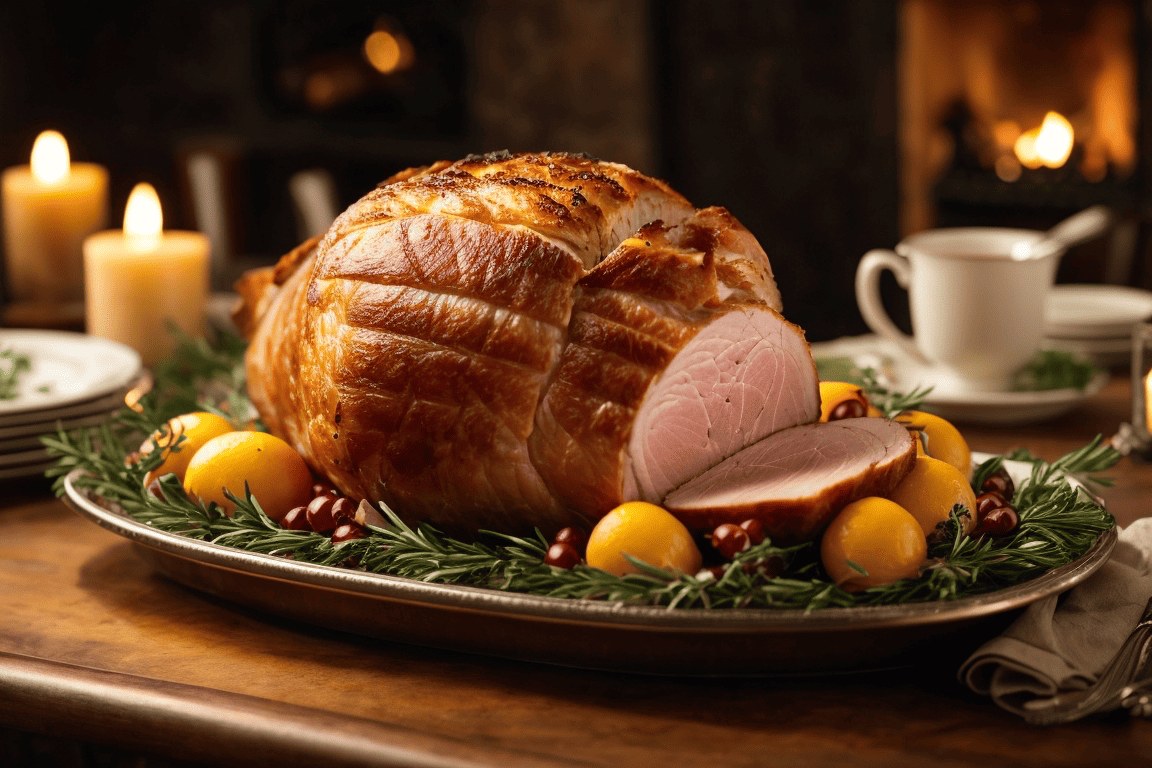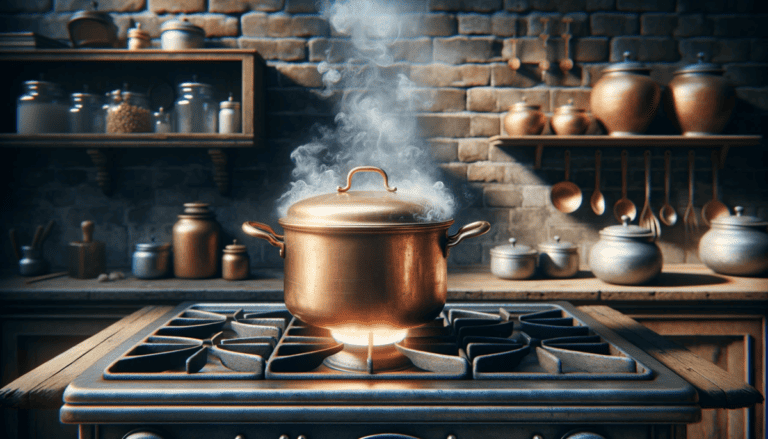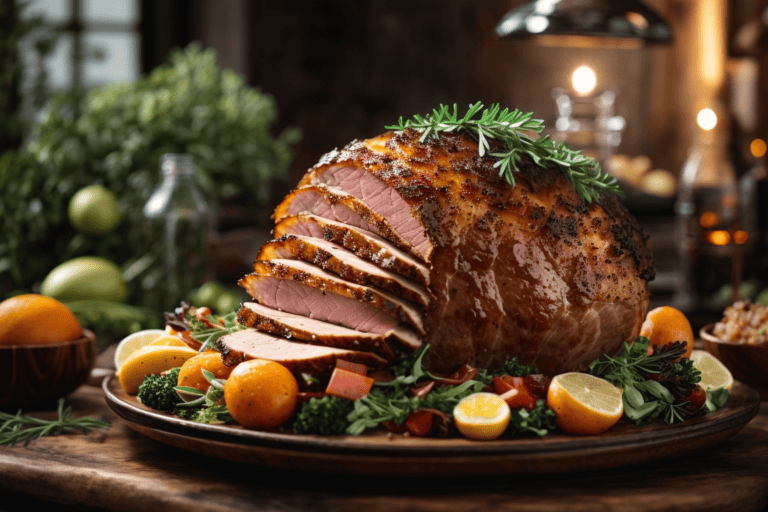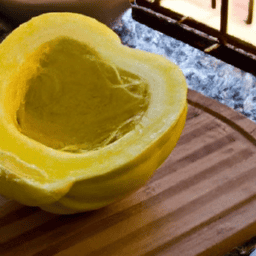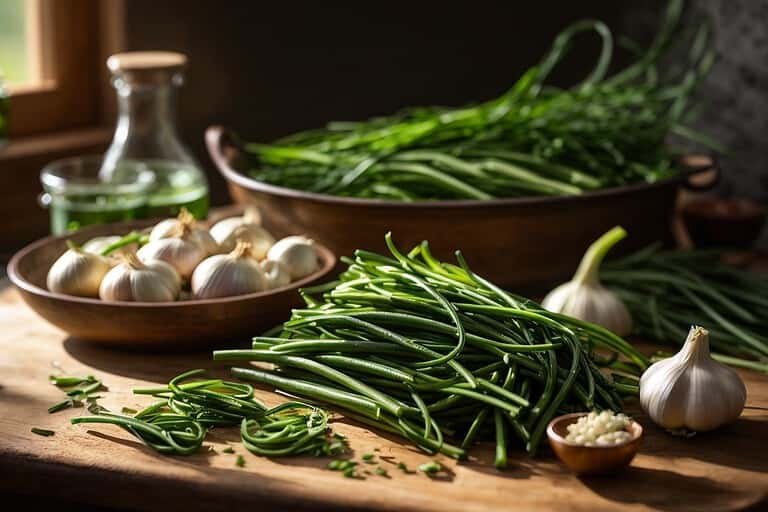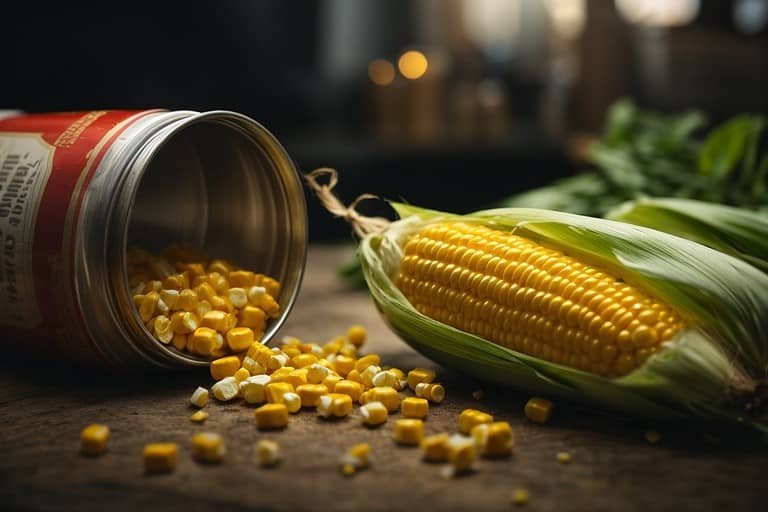How To Cook Uncured Ham: A Better Healthier Choice
In a world brimming with culinary shortcuts and impersonal prepackaged meals, there lies an act of pure, unapologetic authenticity: learning how to cook uncured ham. Forget the modern world’s over-processed gimmicks. Here, it’s about the raw, the real, the unvarnished.
Whether you’re a culinary maestro or just dipping your toes into the vast sea of flavors, this guide will pull you into the belly of the beast. You’ll be wielding the knife, feeling the meat, and summoning flavors that command attention. It’s time to don your apron, channel your inner rebel, and dive into the deep end of culinary arts.
Key Takeaways
- Cured ham uses nitrites or nitrates for preservation, giving it a distinct flavor and pink color. In contrast, uncured ham relies on natural preservation, resulting in a milder flavor and a brownish appearance.
- A good uncured ham should have a natural brown or pink color and a fresh, meaty aroma.
- The cooking time depends on the ham’s size, with a general guideline of 15-20 minutes per pound. Monitoring the cooking process and using a meat thermometer to ensure the internal temperature reaches 145°F (63°C) is crucial.
- Letting the ham rest after cooking ensures juiciness.
- Uncured ham can be served in various ways, from being the centerpiece of a feast to being used in sandwiches, quiches, or omelets.
- Overcooking, not allowing the ham to rest, and improper carving techniques are common mistakes to avoid.
Cooking Time for Uncured Ham at 325°F
| Weight of Ham | Estimated Cooking Time |
|---|---|
| 1 lb | 15-20 min |
| 2 lbs | 30-40 min |
| 3 lbs | 45-60 min |
| 4 lbs | 1 hr – 1 hr 20 min |
| 5 lbs | 1 hr 15 min – 1 hr 40 min |
| 6 lbs | 1 hr 30 min – 2 hr |
| 7 lbs | 1 hr 45 min – 2 hr 20 min |
| 8 lbs | 2 hr – 2 hr 40 min |
| 9 lbs | 2 hr 15 min – 3 hr |
| 10 lbs | 2 hr 30 min – 3 hr 20 min |
Note: Always ensure you’re using a meat thermometer to check the internal temperature of the ham, aiming for an internal temperature of 145°F (63°C) as mentioned in the article.
Understanding How to Cook Uncured Ham
Uncured ham is a type that has not undergone the traditional curing process. Unlike cured ham, which is preserved with the use of nitrites or nitrates, uncured ham is typically preserved using natural methods such as sea salt and celery powder. This means that uncured ham does not contain any artificial additives or preservatives, making it a healthier choice for those who prefer natural and minimally processed foods.
Differences between Cured and Uncured Ham
| Characteristics | Cured Ham | Uncured Ham |
|---|---|---|
| Preservation | Nitrites/Nitrates | Natural methods (e.g., sea salt, celery powder) |
| Flavor | Distinct | Milder |
| Appearance | Pink | Brownish |
| Sodium Content | Higher | Lower |
The main difference between cured and uncured ham lies in the preservation process. Cured ham is treated with nitrites or nitrates, which not only help preserve the meat but also give it that distinct flavor and pink color. On the other hand, uncured ham skips this step and relies on natural preservation methods. As a result, uncured ham has a milder flavor than cured ham and may have a slightly different appearance, typically appearing more brownish.
Benefits of Uncured Ham
| Benefits | Description |
|---|---|
| No Artificial Preservatives | Uncured ham is free from harmful additives and chemicals. |
| Lower Sodium | Suitable for those monitoring their salt intake. |
| Authentic Flavor | Offers a natural and genuine taste of the meat. |
There are several benefits to choosing uncured ham over its cured counterpart. Firstly, uncured ham is free from artificial preservatives and additives, which may be a concern for those trying to avoid such ingredients. Secondly, uncured ham is generally lower in sodium content, making it a better choice for individuals who are watching their salt intake.
Additionally, the natural preservation methods used in uncured ham allow for a more natural and authentic flavor profile, making it a popular choice for those who appreciate the taste of unadulterated meat.
Choosing the Right Uncured Ham
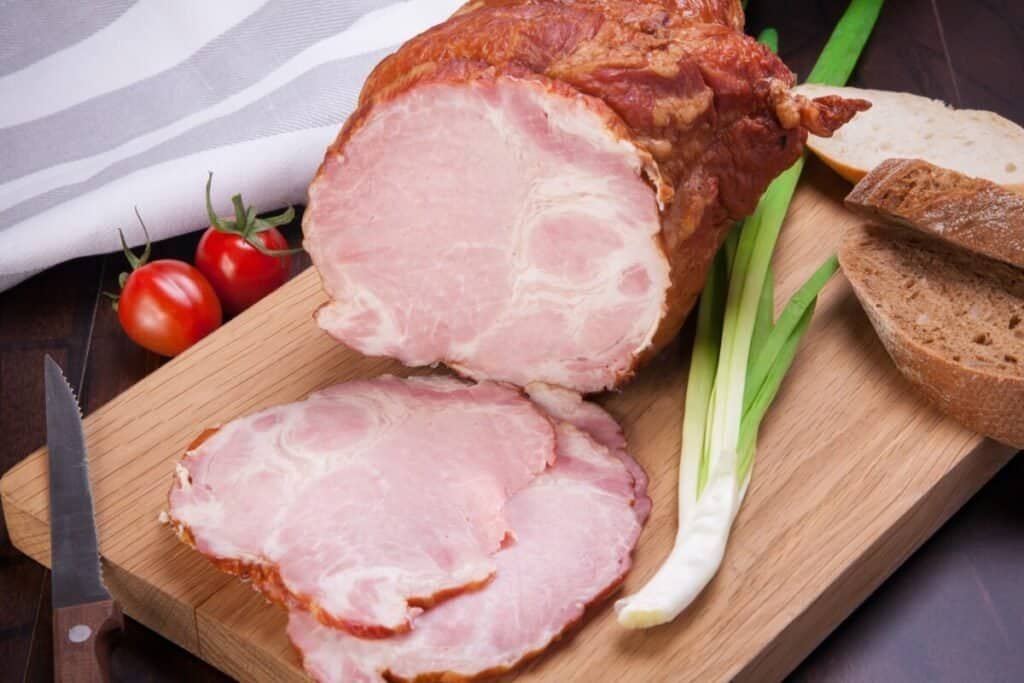
When it comes to selecting the right uncured ham for your cooking needs, there are a few factors to consider.
Selecting the Right Size
One of the first things to consider is the size of the uncured ham. Depending on the number of guests you plan to serve, you may need to choose a large ham to accommodate everyone. If you have a smaller gathering, a smaller-sized ham would be more appropriate. It is also important to consider the size of your oven and the cooking vessel you will be using to ensure that the ham fits comfortably.
Examining the Color and Smell
Before purchasing an uncured ham, examining its color and smell is important. The color of a quality uncured ham should be a natural brown or pink, depending on the specific variety. Avoid hams that have a grayish or greenish tint, as this may indicate spoilage. Also, sniff the ham – it should have a fresh and meaty aroma. If there are any off smells, it may be an indication that the ham is not fresh.
Checking for Quality and Freshness
Quality and freshness are key when choosing an uncured ham. Look for hams that have a good marbling of fat, as this will contribute to the flavor and juiciness of the meat. The meat should also appear moist and have a firm texture. Avoid hams that have excessive amounts of fat or visible signs of discoloration. Additionally, check the packaging or ask your butcher for the date of processing or expiration to ensure that you are purchasing a fresh ham.
Preparation before Cooking
Once you have selected the perfect uncured ham, there are a few necessary steps to take before you can start cooking.

Thawing If Frozen
If your uncured ham is frozen, it is important to thaw it properly to ensure even and thorough cooking. The best method for thawing a frozen ham is to transfer it from the freezer to the refrigerator and allow it to defrost slowly over a period of 24-48 hours. Plan accordingly and give yourself enough time for the ham to thaw completely before you intend to cook it. Avoid using methods such as thawing at room temperature or running it under warm water, as these can promote bacterial growth and compromise the quality and safety of the meat.
Cleaning and Drying the Ham
Before cooking, it is essential to clean the uncured ham. Rinse it under cool running water and pat it dry with paper towels to remove any residue or particles. This simple step helps ensure that you are working with a clean and fresh piece of meat. Be thorough in your cleaning process, paying close attention to any nooks and crannies, as these areas can sometimes harbor bacteria if not properly cleaned.
Preheating the Oven
Preheating the oven is crucial to achieving a perfectly cooked uncured ham. Set the temperature according to the recipe or the instructions provided with your ham. Preheating allows for even heat distribution and helps the ham cook evenly throughout. Preheating the oven for at least 15-20 minutes is recommended. While the oven is preheating, you can move on to seasoning the ham.
Seasoning the Ham
Choosing the Right Spices
When it comes to choosing the right spices for your uncured ham, there are several options to consider. Some popular choices include black pepper, garlic powder, rosemary, thyme, and paprika. These spices add depth and enhance the natural flavors of the meat. Consider your personal preferences and the flavor profile you wish to achieve when selecting your spices. It is also worth noting that uncured ham has a more subtle flavor compared to its cured counterpart, so it is important to strike a balance with the seasoning.
Applying the Seasoning
To apply the seasoning, start by gently massaging the spices onto the surface of the uncured ham. Make sure to cover the entire ham, including the sides and any exposed meat. Be generous with the spices, as some of it will melt away during cooking. You can also drizzle the ham with a small amount of olive oil or brush it with melted butter for additional flavor and moisture. This will help create a beautiful crust and prevent the meat from drying out during roasting.
Recipes for Ham Glazes
If you want to take the flavor of your uncured ham to the next level, consider adding a glaze during the cooking process. A glaze can add a sweet, tangy, or savory element to the ham, depending on your preference. Some popular glaze options include honey and mustard, pineapple and brown sugar, maple syrup, and Dijon mustard, or a combination of these ingredients. Glazes can be brushed or poured over the ham, and some recipes even call for basting the ham periodically during cooking to enhance the flavor.
Taste Bud Recipe Exclusives
- Mustard-Brushed Uncured Ham Extravaganza
- Rosemary & Thyme Ham with Succulent Cream Dijoin Sauce
- Garlic & Lemon Zest Ham
- Tangy Apple Cider Maple-Glazed Ham
Using the Right Kitchen Utensils
Having the right kitchen utensils can make cooking easier and more efficient.
Choosing a Roasting Pan
When choosing a roasting pan for your uncured ham, look for a pan that is large enough to accommodate the size of your ham comfortably. A pan with a rack is ideal, as it helps elevate the ham and allows for proper air circulation, which is essential for even cooking. If you don’t have a roasting pan with a rack, you can improvise by placing a wire cooling rack inside a regular baking pan. This will help prevent the ham from sitting in its juices and becoming soggy during cooking.
Using a Meat Thermometer
A meat thermometer is an indispensable tool when it comes to cooking uncured ham to perfection. It helps you monitor the internal temperature of the ham, ensuring that it reaches the desired level of doneness and guaranteeing food safety. The recommended internal temperature for uncured ham is 145°F (63°C). Insert the meat thermometer into the thickest part of the ham, avoiding contact with bones or fat, and periodically check the temperature throughout the cooking process.
Additional Tools Needed for Cooking
In addition to a roasting pan and meat thermometer, a few other tools can come in handy when cooking uncured ham. You may need a basting brush or spoon for applying glazes or for basting the ham during cooking. Kitchen twine or butcher’s twine is useful for tying the ham, especially if you have opted for a boneless or partially boned ham. A sharp carving knife and a carving fork are essential for slicing and serving the cooked ham. These readily available tools will help make the cooking process smoother and more enjoyable.
Cooking Process for Uncured Ham
Now that you have prepared your uncured ham and gathered your kitchen tools, it’s time to move on to cooking.
Determining the Cooking Time
The cooking time for uncured ham depends on several factors, including the size of the ham and the desired level of doneness. As a general guideline, you can estimate approximately 15-20 minutes of cooking time per pound of uncured ham. However, it is crucial to refer to the specific instructions provided with your ham or follow a trusted recipe for accurate cooking times. Using a meat thermometer to monitor the internal temperature will also help ensure that the ham is cooked thoroughly.
Monitoring the Cooking Process
Monitoring the ham during cooking is important to prevent overcooking or undercooking. Keep an eye on the color of the ham and check the internal temperature regularly. If you notice that the surface is browning too quickly or becoming too dark, you can lightly tent the ham with aluminum foil to prevent further browning while ensuring even cooking. Basting with glaze or pan juices periodically can also help keep the ham moist and add flavor.
Knowing When the Ham is Done
The best way to determine if your uncured ham is done is by checking its internal temperature using a meat thermometer. Eating is considered safe once the ham reaches an internal temperature of 145°F (63°C). Remember to insert the thermometer into the thickest part of the ham, away from any bones or fat, to get an accurate reading. It is important not to rely solely on visual cues, as the appearance of the ham can sometimes be misleading. When the ham is cooked to the desired temperature, remove it from the oven and let it rest before carving.
Resting and Carving
Allowing the cooked ham to rest before carving is essential to ensure a juicy and flavorful result.
Importance of Letting the Ham Rest
Resting the cooked ham allows the juices to redistribute within the meat, resulting in a more tender and succulent texture. During the cooking process, the internal temperature of the ham increases, causing the meat fibers to contract and squeeze out moisture. Allowing the ham to rest for approximately 10-15 minutes after removing it from the oven allows the fibers to relax and recapture the moisture, resulting in a more enjoyable eating experience.
Methods for Carving the Ham
When it comes time to carve your uncured ham, you can use a few different methods. One popular and straightforward method is to carve the ham into individual slices. Start by cutting parallel to the bone to create a flat surface. Then, using a sharp carving knife, make thin, even slices across the grain of the meat. Another option is to carve the ham into chunks or cubes, especially if you plan to use the leftovers for other dishes. Take your time, and don’t be afraid to adjust your carving technique based on the shape and size of your specific ham.
Serving Suggestions
Uncured ham is a versatile ingredient that can be enjoyed in various ways. Whether you are serving it as the centerpiece of a holiday feast or incorporating it into everyday dishes, there are endless serving options. For a classic approach, serve carved slices of ham alongside traditional sides such as roasted vegetables, mashed potatoes, and a fresh salad. You can also use the ham to make sandwiches, quiches, or omelets for a quick and satisfying meal. Experiment with different flavor combinations and let your creativity shine when serving up your delicious uncured ham.
Leftovers Handling and Storage
If you have leftover uncured ham, handling and storing it properly is important to maintain its quality and safety.
Cooling and Storing Leftovers
After your meal, allow the leftover ham to cool to room temperature before storing it in the refrigerator. You can store the ham in an airtight container or wrap it tightly in plastic wrap or aluminum foil. Using the leftover ham within three to four days is recommended to ensure the best taste and quality. If you have a large amount of leftover ham that you cannot consume within that timeframe, consider freezing it for future use.
Reheating Instructions
When reheating leftover uncured ham, there are several methods to choose from, depending on your preference. One simple option is to gently reheat the slices in a skillet or frying pan over medium heat. Add a small amount of liquid, such as water, broth, or a glaze, to help restore moisture. Alternatively, you can reheat the ham in the oven. Preheat the oven to 325°F (163°C), place the ham in a baking dish or on a baking sheet, cover it with foil, and heat for approximately 10-15 minutes or until warmed through. Use a meat thermometer to confirm that the internal temperature reaches 145°F (63°C) for food safety.
Creative Ways to Use Leftovers
Leftover uncured ham can be a wonderful ingredient to incorporate into various dishes for an extra burst of flavor. Consider adding diced ham to omelets, frittatas, or quiches for a delicious breakfast or brunch option. You can also use it to make comforting soups, stews, or casseroles by combining it with vegetables, legumes, or pasta. Another tasty idea is to use the ham as a topping for homemade pizzas or as a filling for savory hand pies. Get creative in the kitchen, and the possibilities for reinventing your leftover uncured ham are endless.
Common Mistakes to Avoid when Cooking Uncured Ham
To ensure a successful cooking experience with your uncured ham, it is important to avoid common mistakes that can affect the taste and quality of the final dish.
Overcooking The Ham
Overcooking is a common mistake when it comes to preparing uncured ham. The meat can become dry and tough, resulting in an unpleasant eating experience. To avoid this, it is crucial to monitor the internal temperature of the ham using a meat thermometer and remove it from the oven when it reaches 145°F (63°C).
Not Allowing It to Rest
Skipping the resting period after cooking is another mistake to avoid. Allowing the ham to rest for a short period of time before carving helps retain its juiciness and tenderness.
Improper Carving Techniques
Improper carving techniques can result in uneven slices or difficult carving. It is important to carve against the grain of the meat for a more tender texture. Take your time and use a sharp carving knife to achieve clean and uniform slices.
Frequently Asked Questions about Cooking Uncured Ham
Here are some commonly asked questions and tips to help you navigate the world of cooking uncured ham.
Safety Tips for Handling Uncured Ham
When handling uncured ham, it is important to prioritize food safety. Always make sure to store the ham properly in the refrigerator or freezer to prevent spoilage. Thaw frozen ham in the refrigerator to avoid bacterial growth. Use separate cutting boards and utensils for raw and cooked ham to prevent cross-contamination.
Tips for Purchasing Uncured Ham
When purchasing uncured ham, it is recommended to buy from a reputable source, such as a trusted butcher or quality grocery store. Check the label or ask the seller about the specific methods used for preservation. Look for hams with minimal ingredients and no artificial additives or preservatives for a more natural and wholesome product.
Alternatives If You Can’t Find Uncured Ham
If you are unable to find uncured ham, there are a few alternatives you can consider. Look for hams labeled as “nitrate-free” or “nitrite-free,” as these are generally made using natural preservation methods. Alternatively, you can opt for fresh pork cuts, such as pork loin or pork tenderloin, which can be cooked and seasoned to mimic the flavors of uncured ham.
Cooking uncured ham is a delightful experience that allows you to savor the natural flavors of high-quality meat. By understanding the differences between cured and uncured ham, choosing the right ham, and following proper preparation and cooking techniques, you can create a mouthwatering dish that will impress friends and family alike.
Whether you enjoy carved slices for a special occasion or get creative with leftovers in everyday recipes, uncured ham is a versatile and delicious ingredient that is sure to enhance any meal.
Q: What is uncured ham?
A: Uncured ham is a type of pork that has not undergone the traditional curing process, which usually involves the use of nitrates or nitrites. It is often considered a more natural or healthier option.
Q: How do I prepare uncured ham before cooking?
A: Before cooking, it’s essential to thaw the ham if it’s frozen. You can also choose to marinate it for added flavor. Make sure to preheat your oven to the required temperature as well.
Q: Do I need to wash the ham before cooking?
A: It’s generally not recommended to wash any meat, including ham, as this can spread bacteria. Cooking at the proper temperature will kill any bacteria present.
Q: What temperature should I cook the uncured ham?
A: The internal temperature of the ham should reach at least 145°F (63°C) for safe consumption. Use a meat thermometer to ensure accuracy.
Q: How long does it take to cook uncured ham?
A: The cooking time depends on the size and cut of the ham. Generally, it takes about 15-20 minutes per pound at 325°F (163°C).
Q: Can I use a slow cooker to cook uncured ham?
A: Yes, you can use a slow cooker. Make sure to adjust the cooking time and temperature according to the manufacturer’s instructions.
Q: What spices and herbs go well with uncured ham?
A: Common spices and herbs that pair well with uncured ham include cloves, mustard, brown sugar, rosemary, and thyme.
Q: Should I glaze the ham?
A: Glazing is optional but can add a delicious layer of flavor. You can use a mixture of honey, brown sugar, and mustard for a simple glaze.
Q: How do I know when the ham is done cooking?
A: The ham is done when it reaches an internal temperature of 145°F (63°C). Always use a meat thermometer to check.
Q: What should I do with leftover uncured ham?
A: Leftover ham can be stored in the refrigerator for up to 4 days or frozen for up to 2 months. It can be used in various recipes like sandwiches, casseroles, and soups.
Q: Is it necessary to rest the ham after cooking?
A: Yes, it’s advisable to let the ham rest for about 10-15 minutes after cooking. This allows the juices to redistribute, making the meat more tender and juicy.
Q: Can I cook uncured ham from frozen?
A: It’s not recommended to cook meat from a frozen state as it may cook unevenly. Always thaw it first.

